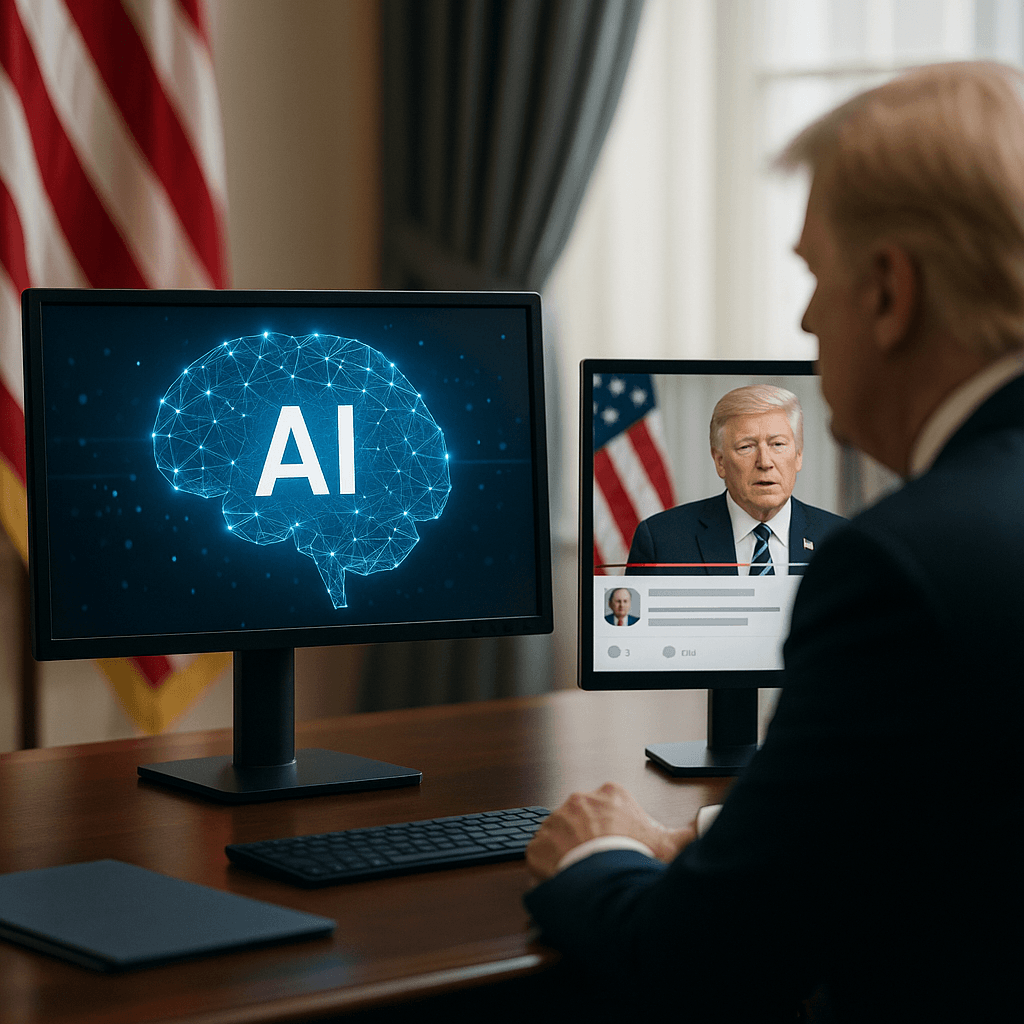President Donald Trump has broken new ground as America's first leader to regularly share AI-generated videos on his official social media accounts. A WIRED investigation reveals the behind-the-scenes process of how these synthetic clips - from fighter jet fantasies to racist deepfakes - make their way from the internet to the presidential feed, raising serious questions about misinformation at the highest levels of government.
President Donald Trump has quietly ushered in a new era of political communication, becoming the first sitting U.S. president to regularly share AI-generated videos on his official social media accounts. The development marks an unprecedented fusion of synthetic media and presidential messaging that experts say could reshape how we think about truth in political discourse.
The most notorious example came earlier this month when Trump posted a Top Gun-style video showing himself piloting a fighter jet labeled 'KING TRUMP' while wearing a crown, dumping waste on fictional protesters in Times Square. The bizarre clip, along with racist AI depictions of House Minority Leader Hakeem Jeffries and dystopian 'Trump Gaza' content, has raised alarm bells about the normalization of synthetic media at the highest levels of government.
According to a senior White House official interviewed by WIRED, Trump sometimes discovers these videos himself on Truth Social or through unspecified channels, saving them to his camera roll before releasing them to his millions of followers. More often, though, staffers identify clips and seek approval before posting them on the president's main account.
The social media operation has evolved significantly since Trump's Twitter suspension following January 6. Two key figures now control the flow of content: Dan Scavino, recently promoted to director of the White House Presidential Personnel Office, and Natalie Harp, dubbed 'the human printer' internally for her role in managing Trump's digital presence.
Laura Loomer, the conspiracy theorist who maintains Trump's ear, estimates that Scavino and Harp physically execute 95% of Truth Social posts - a dramatic shift from Trump's peak Twitter days when he was far more hands-on with his social media presence. The former campaign official notes Trump has 'significantly' reduced his direct posting compared to his first term.
But the mechanics of how AI videos reach the presidential account remain murky. The White House won't specify who creates the content Trump doesn't find organically or whether there's a preferred AI service being used. Popular platforms like and are potential sources, though the administration remains tight-lipped about its AI toolkit.












